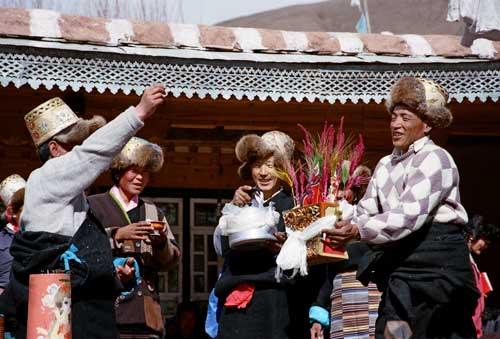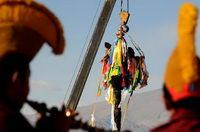 May. 11, 2025
May. 11, 2025
Weather
Tibetan New Year coincides with Spring Festival, Valentine's Day
2010-02-11 15:46 BJTSpecial Report: 2010 Spring Festival |
The 2010 Tibetan New Year falls on February 14 on the solar calendar, coincidentally, that day is also China’s Lunar New Year, as well as the western holiday Valentine's Day. The three festivals arrive on the same day, which is quite a coincidence and very rare over the last one hundred years.
Like many ancient ethnic groups, the Tibetans have their own calendar, the Tibetan calendar. The year 1027 is identified as the first year on the Tibetan calendar, and it is from this year that the calendar begins. The Tibetan calendar is divided into odd months and even months, odd months are 30 days, even months are 29 days, non-leap years are 12 months, and leap years are 13 months. Around the New Year, people will hold various activities to say goodbye to the old year and welcome the New Year, making the Tibetan New Year the traditional festival.
 |
| The Tibetan New Year falls on Feb.14 this year the same day as the Spring Festival |
The Tibetan calendar counts the years by combining the five elements in Chinese culture, metal, wood, water, fire, and earth, with the Chinese Zodiac: rat, cow, tiger, rabbit, snake, dragon, horse, sheep, monkey, rooster, dog and pig. Among these, the five elements are divided into Yin and Yang, which correspond exactly to the ten heavenly stems, and the Zodiac also coincides with the twelve Earthly Branches, therefore, the combination of Yin Yang, the five elements and the Chinese zodiac forms a sixty year cycle.
|
Photos |
| Tibetan Buddhist believers make New Year wishes |
 Mail
Mail Share
Share Print
Print



 Video
Video









 2009 China Central Television. All Rights Reserved
2009 China Central Television. All Rights Reserved